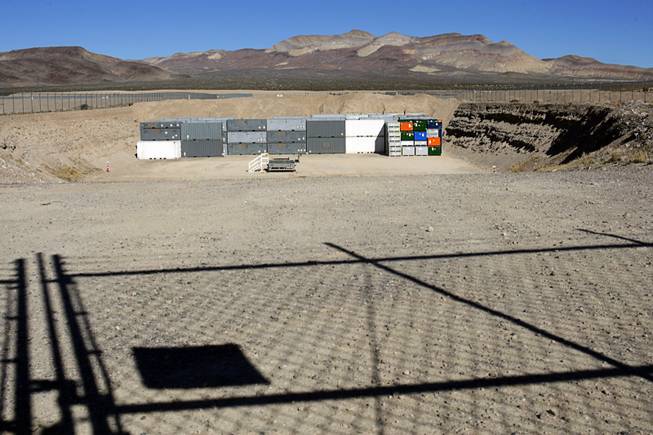
A low-level radioactive waste cell is shown in the Area 5 Radioactive Waste Management Site of the Nevada National Security Site (N2S2), previously the Nevada Test Site, about 65 miles northwest of Las Vegas on Feb. 1, 2011.
Published Tuesday, Dec. 23, 2014 | 12:24 p.m.
Updated Tuesday, Dec. 23, 2014 | 4:22 p.m.
Nevada and the federal Energy Department announced Tuesday they've formalized a panel to study contentious issues including whether radioactive material from a World War II-era plant in Tennessee will be buried at a former nuclear weapons proving ground north of Las Vegas.
Gov. Brian Sandoval and Energy Secretary Ernest Moniz announced that more than a year of negotiations yielded a signed agreement to continue "senior-level" talks by a group of state and federal employees dubbed the Nevada National Security Site Working Group.
Sandoval called the agreement a milestone achievement, and aides said a conversation that began about shipments from Oak Ridge, Tennessee, broadened into a commitment to address a range of state concerns about what the federal government does at the vast former Nevada Test Site.
"Because that got us together, we were able to reach an understanding on key issues that have been important to the state for decades," said Leo Drozdoff, director of the Nevada Department of Conservation and Natural Resources and a member of the working group. "We finally have a meaningful dialogue."
Drozdoff and other Sandoval administration officials said the agreement to keep talking didn't represent a softening of the state's staunch opposition to the Yucca Mountain nuclear waste repository at the western edge of the former Nevada Test Site. The 1,360-square-mile secure federal reservation is almost the size of Long Island, New York. It's now called the Nevada National Security Site.
A top priority remains resolving a dispute over whether 403 baseball bat-sized canisters of solid radioactive waste should be buried in 40-plus foot trenches and then topped by shipping containers full of uranium-contaminated worker uniforms, machine parts and other waste overtopped by 8 feet of dirt about 65 miles from Las Vegas.
"We are still in talks with the state on what the next steps on shipments will be," said Darwin Morgan, a security site spokesman in North Las Vegas, said Tuesday. "We are optimistic that we will be able to ship in early 2015."
The materials, about 100 shipments, have been designated by the Energy Department as low-level radioactive waste.
Trucks were ready to roll in mid-2013 when the state balked at the plan, opponents called for a full-scale National Environmental Policy Act review, working group participants began meeting, and the Energy Department began hosting town hall-style public meetings to describe the burial plan.
The six-page Sandoval-Moniz agreement, signed Monday, notes that no new full-scale National Environmental Policy Act review will be required, and that the 2,000-mile shipments would be handled by armed guards from the Office of Secure Transport.
Moniz noted in August 2013 that the state doesn't have jurisdiction over the shipments. But the Energy Secretary said his agency was reshaping plans in response to state concerns, including questions about the safety of transporting the waste in and around Las Vegas.
The agreement pledges to improve communication and information about the security site and to "identify areas of improvement and resolve key concerns."
It mentions solar and geothermal energy technology across the state, and even cites Tesla Motors' planned $5 billion electric vehicle battery factory near Reno.
Key elements include a review "by an independent scientific body" about how radioactive waste is classified, and a promise to provide time to review any proposed changes before they are finalized. It does not identify what body should conduct the review.
CORRECTION: This story has been updated to reflect that no agreement has been reached. | (December 23, 2014)

Join the Discussion:
Check this out for a full explanation of our conversion to the LiveFyre commenting system and instructions on how to sign up for an account.
Full comments policy